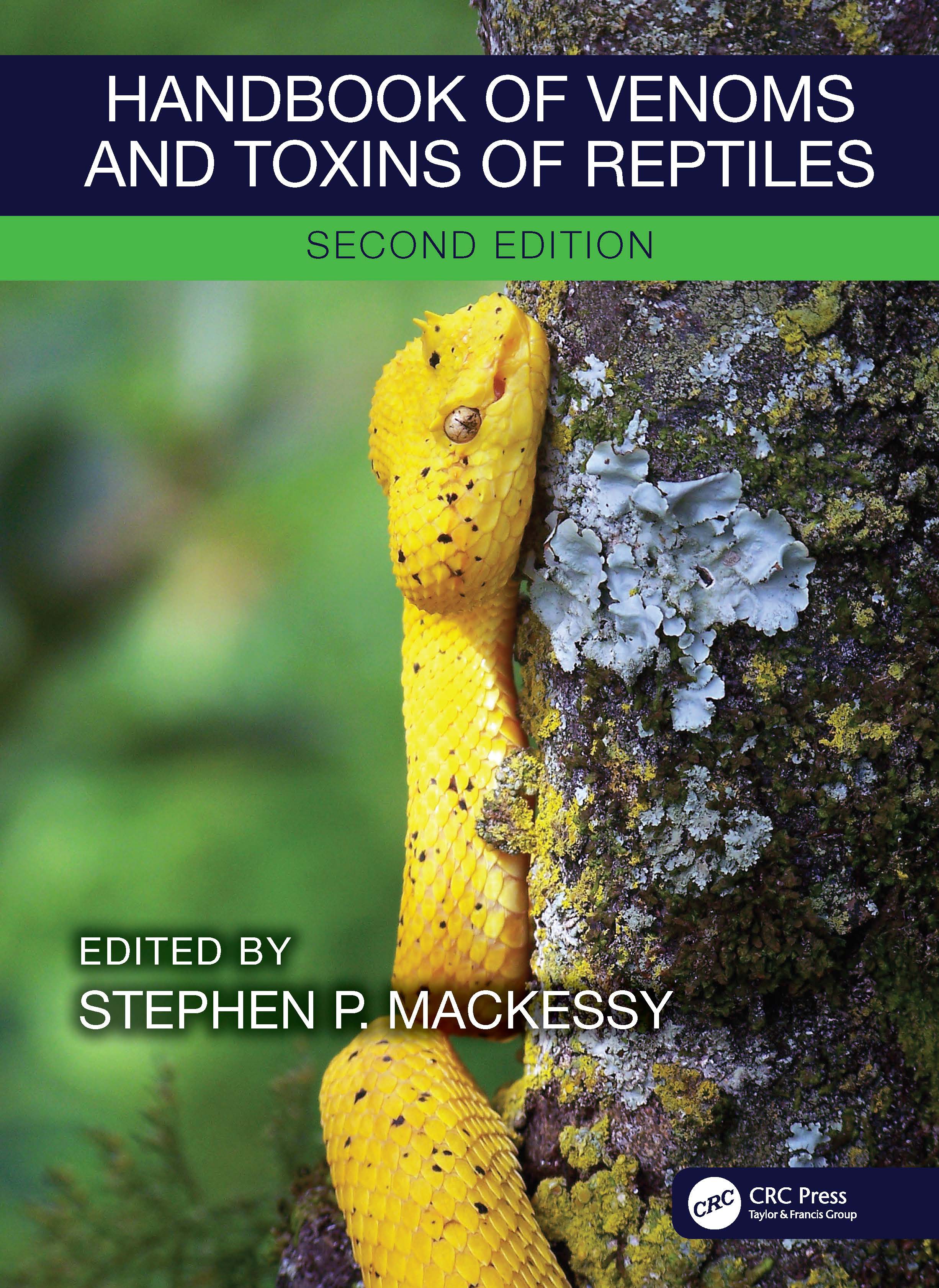Handbook of Venoms and Toxins of Reptiles
ISBN 9780367149741
May 25, 2021 Forthcoming by CRC Press
680 Pages 108 Color & 46 B/W Illustrations
Available on Taylor & Francis eBooks

ABSTRACT
A decade after publication of the first edition, Handbook of Venoms and Toxins of Reptiles responds to extensive changes in the field of toxinology to endure as the most comprehensive review of reptile venoms on the market. The six sections of this new edition, which has nearly doubled in size, complement the original handbook by presenting current information from many of the leading researchers and physicians in toxinology, with topics ranging from functional morphology, evolution and ecology to crystallography, -omics technologies, drug discovery and more. With the recent recognition by the World Health Organization of snakebite as a neglected tropical disease, the section on snakebite has been expanded and includes several chapters dealing with the problem broadly and with new technologies and the promises these new approaches may hold to counter the deleterious effects of envenomation.
This greatly expanded handbook offers a unique resource for biologists, biochemists, toxicologists, physicians, clinicians, and epidemiologists, as well as informed laypersons interested in the biology of venomous reptiles, the biochemistry and molecular biology of venoms, and the effects and treatment of human envenomation.
Chapter13|16 pages
Myotoxin a, Crotamine and Defensin Homologs in Reptile Venoms
Abstract - Snakebite envenomation is common in all inhabited continents of the world, with more than 100,000 fatalities occurring every year. Depending on the snake species involved, envenomation includes often disabling intense local tissue damage with inflammation, pain and myonecrosis, caused in part by molecules known as myotoxins. Myotoxins are found in the venoms of several snakes, and their homologs are also found in lizards and mammals (the Platypus). These small peptide toxins show a unique structural/physicochemical resemblance to β-defensins, which are anti-microbial peptides (AMPs) involved in the resistance of epithelial surfaces to microbial colonization. These similarities suggest a possible common phylogenetic and/or functional association among these myotoxic and anti-microbial peptides. These β-defensins seems to play a key role as toxins in the envenomation process by activating the immune system. Crotamine, purified from the venom of the South American Rattlesnake Crotalus durissus terrificus, is one of the first myotoxins to be characterized. In addition to its role in rapid prey incapacitation, several therapeutic applications of myotoxin a like peptides (mainly crotamine), for instance, as antitumor and anti-microbial agents, have been characterized and are listed in this chapter. The several different characterized biological activities exhibited by these myotoxin-like peptides are mostly dependent on their three-dimensional structure and positively charged surface (cationic feature). Herein, we present the main known myotoxins of venoms, introduce some alternatives for neutralizing their effects in snakebite envenomations, and discuss their mechanism of action(s), designated biological functions, and structural/functional similarities with AMPs (β-defensins). This chapter will therefore discuss the structure, biological activities and differences/similarities shared between the toxins with antitumoral/anti-microbial activities (namely, myotoxin-a and crotamine) and the immune effector (defensin-like) polypeptides. Interestingly, toxins and immune effectors share similar evolutionary and structural patterns, and they both seem to have evolved to defend against the threats of potential predators, microbial invasions and/or malignant cells.


